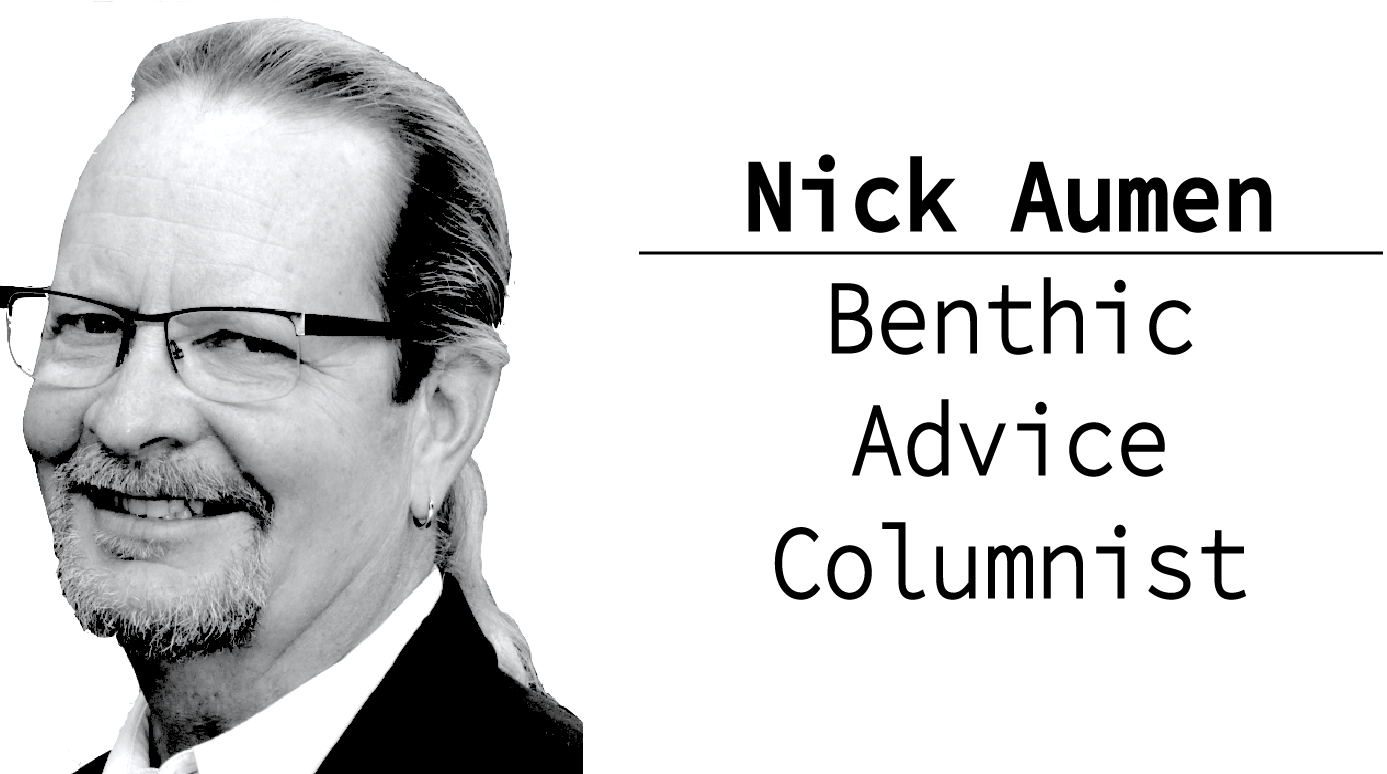In the Drift: Issue 37, Spring 2020
In this issue
- Summer of Science
- Exposing the murky depths: The value of scientific illustration for freshwater science - a multi-part series (part 1)
- Dear Nick
- President's Environment
- Rembering Wayne Minshall
Dear Society for Freshwater Science,
Your spring issue of the SFS newsletter is here! We have exciting new content in this issue, including a new series on scientific visualization for freshwater scientists. Thank you Colden Baxter, Barrett Klein, Amy Rosemond, and Steve Thomas for their excellent contributions to this issue.
Take care,
Ross Vander Vorste, newsletter editor
Ali Chalberg, co-editor
Brad Morris, co-editor
In lieu of the in-person annual meeting, SFS is hosting a Summer of Science! With summer as our guide, we hope you will adopt appropriate attire at home or in media presentations – in other words, bright colors, beach imagery, and sunglasses are encouraged! Please note that you must be a current member of SFS to participate. Not a current member? Renew or join SFS here.
View event program from Week 2-4
View Summer of Science Website
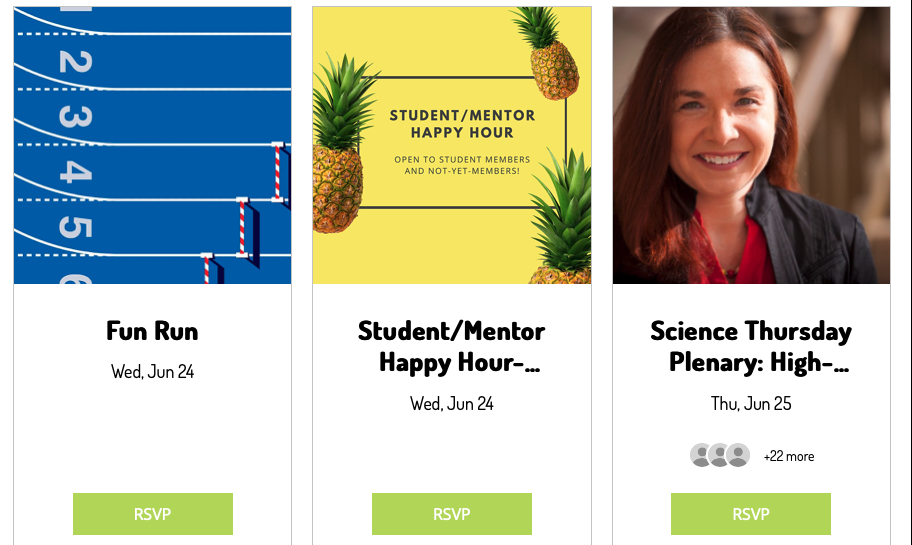
Exposing the murky depths: The value of scientific illustration for freshwater science - a multi-part series (part 1)
By Dr. Barrett Klein
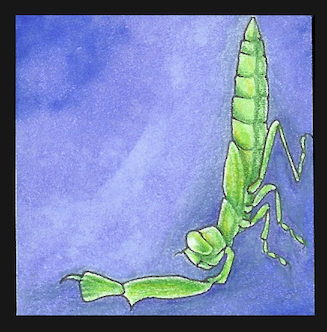
Why is it especially important for freshwater scientists to become proficient consumers and producers of visuals related to freshwater science?
It may be obvious why any scientist should be a good consumer. If you cannot critically evaluate visuals that attempt to convey scientific messages, you are left to wallow in ignorance, or are hoodwinked into believing misleading or inaccurate messages. Bad visuals then survive and spread, setting back scientific understanding and progress. It is difficult to remove or supplant visuals once they are released into the world.
Okay, so we, as scientists, should learn to critically consume visuals, but is it really important for us to be good producers of visuals? I argue that it is, and in this first installment I share some thoughts about the challenges and assets of including images in science, and in freshwater science specifically. This is not designed to be comprehensive in any way; it is only meant to prod us to reexamine our contributions to science (past, present, or future) and reflect on what it would mean for us to expand our powers of visual expression. I would greatly value feedback related to your experiences as a freshwater scientist in this context.
It is important to begin with the obvious, so that my attempts to persuade are grounded firmly in the benthos. Creating visuals takes time, effort, sometimes money, and requires a degree of visual literacy and practice. An overwhelming array of software applications and programming languages exist for managing data and creating visuals. It takes time and much practice to find the tools that are most appropriate for you. Sometimes these programs cost money, and occasionally publishing houses demand payment for visuals beyond an arbitrary minimum, or for producing visuals in color. The landscape of publishing is changing rapidly, so what rules and restrictions exist today may not exist tomorrow. You have the excellent option of hiring a talented, professional scientific illustrator (for an introduction to the profession, see Hodges 2003), but this costs money and does not release you from needing to have a vision of what is required to convey your message. Scientific and visual literacy can help you to avoid misleading your readers, and some excellent guides exist to navigate potential visual mine fields (e.g., Tufte 1983, https://www.edwardtufte.com/tufte/).
Text can do the job, right?
Not always. Text alone can be cumbersome and less effective than a visual complement, depending on the content. I frequently stumble upon examples of text that suffer without visuals. Consider the last scientific paper you read. Were all of the methods crystal clear? My guess is that too frequently the methods were perplexing, muddied, and devoid of images that could help. I challenge students in my Animal Behavior course to find a relevant paper that entirely lacks images, then to create an image that they wish had existed in the Methods section because it would have made understanding the study easier. They have the option of sharing their drawing with an author of their chosen paper to find out if they were successful in representing the author’s methods. One of my secret agendas in this exercise is to demonstrate to students that science could benefit from inclusion of more visuals. Another agenda is to influence those authors to reconsider their visually depauperate process. On the flipside, I have also found examples of visuals that detract from a message. Your mission isn’t to create gratuitous visuals, but to create visuals that help to achieve the following:
Clearly communicate your science so that others can understand and appreciate your work
Clearly communicate your science so that others can replicate your research
Excite and inspire others, including prospective, future contributors or colleagues
Enrich the field, either following historical precedent or breaking from it
Clearly communicating your science is paramount. If someone wishing to understand your intent, your methods, or your results fails to grasp your message, you have lost opportunities to effectively disseminate your science. If the message is obtuse, the response will be unsatisfactory. Alternatively, if your execution is lucid, you assist your audience to understand and appreciate your work. This is accomplished by very clearly laying out the organization of your text, but it can also involve visually explaining when words are less effective at conveying information. Among the visual devices available to scientists –tables, charts, graphs, and images— images are the least abstract and, for that reason, can be the most accessible and relatable (Klein & Seeley 2015). Images take many forms, including photographs, drawings, digital renderings, videos, computer animations, interactive media, etc. Each opportunity to include an image comes with its own challenges, but the benefits can make the time, effort, or money worth the investment.
Clarity can invite replication. If someone cannot understand your methods, that person is less able or apt to replicate your research, and your contribution will stagnate and wither rather than blossom into follow-up efforts. The best methods sections include visuals, especially if there is a lack of precedence in the literature that explicitly displays the subjects, including the methods, of choice. I’ve found that reviewers and journals are more willing than not to publish visuals that help to clarify methods.
Just as it is vital to achieve clarity, it is important to make your science engaging and inspiring to others. You were probably drawn to freshwater studies in part because freshwater systems are beautiful and you were inspired by visually alluring elements of the biology. Maybe you watched a spectacular documentary or attended an image-rich science talk. Why not share a hint of this allure in your peer-reviewed publications? Unless your writing is sublime and the material inherently engaging to your intended audience, it can suffer from a lack of visuals. Scratch that. Even if your writing is sublime and inherently engaging, intended and unintended readers alike may read, spend more time reading, and share a paper that includes an effective visual. Humans are, by and large, visual organisms, so it behooves us to exploit this sensory bias.
By creating effective visuals, you can enrich your beloved field of science, whether or not a precedence exists. There is ample evidence of interest in visualizing freshwater subjects (https://www.freshwatersillustrated.org/), and evidence of the highest levels of artistry in the service of freshwater science. Stunning examples can be found in the illustrations by Anker Odum in Caddisflies: The Underwater Architects by Glenn B. Wiggins (https://books.google.co.uk/books?id=gsFYGVzg4JcC&printsec=frontcover#v=onepage&q&f=false), by Ed Lam (http://www.edlam.net/book.html), and by countless illustrators of fish (Pavid 2020), many freely available through digitization projects (e.g., https://www.biodiversitylibrary.org/, https://www.si.edu/openaccess, https://www.amnh.org/research/research-library). The future of a science, I would argue, can depend in part on the power and clarity of its visuals. Your visual contributions could help freshwater science prosper by bringing attention to conservation efforts, to your discoveries, to an ecosystem, and to a vibrant field of study. The best way to build awareness is by disseminating powerful visuals.

Figure 1. One page among many gems published in Wiggins’ work on caddisflies. Contributions to the systematics of the caddisfly family Limnephilidae (Trichoptera), 1973. Wikipedia Commons https://archive.org/stream/contributionstos00wigg/#page/28/mode/1up
How can freshwater science specifically benefit from the production and dissemination of effective visuals?
Humans are not naturally aquatic. What lurks in the murky depths, and how one goes about making discoveries is a mystery to most of the world. Visually depicting those mysteries is your key to inviting strangers in. Visualizing subjects comes with hurdles specific to a given subject or project, however, and freshwater science is saturated with its own intrinsic challenges. It isn’t as easy to access or capture specimens, to photograph them, and many are too often disregarded for their superficial blandness. Rivers and fish of the world are often celebrated, but if your readers were to pay close attention to the undervalued swamps, bogs, fens, marshes, or freshwater fungi, arthropods, molluscs, annelids, cnidarians, rotifers, diatoms, and countless others, they would find forms and physical phenomena awaiting their due adulation. There is beauty waiting to be revealed in every freshwater system and droplet. For the future of your science and your field, consider harnessing the power of visuals to its greatest potential by visually communicating the intricacies of the scientific process, the thrill of discovery, and the inherent beauty of your study subject.
Bring clarity to the benthos:
Below are a few images I have created of freshwater-relevant organisms. I include these not as the best examples of what exists or could exist, but because it was remarkably easy to ask myself for permission to include them here.

Figure 2. Lifecycles of mayfly and endoparasitic nematode. This illustration is a composite of snapshots through time for two symbiotic species. Photographs or text alone might have difficulty cohesively and clearly conveying the same information. Illustration by Barrett Klein, 1993.

Figure 3. Vignettes of natural phenomena in Central Park, New York. This is another composite, but of many stories in a single setting, including several related to freshwater organisms. This was not published in a peer-reviewed science paper, but produced for the public by the American Museum of Natural History in conjunction with the opening of their Hall of Biodiversity. Illustration by Barrett Klein, 1998.

Figure 4. Side-by-side imagery showing salient features of normal vs. parasitized mayflies. When I drew these for the author, she told me very little at the outset so she could see if drawings by a naïve person would reveal the morphological changes she was writing about. She expressed relief when they did. Illustrations by Barrett Klein, 1993. Modified from source: Vance SA. 1996. Morphological and behavioural sex reversal in mermithid-infected mayflies. Proceedings of the Royal Society of London Series B-Biological Sciences 263:907-912.

Figure 5. Experimental methods, in this case the process of building the model of a robotic frog. Models and photographs by Barrett Klein, 2012.
Source: Klein BA, Stein J, Taylor RC. 2012. Robots in the service of animal behavior. Communicative & Integrative Biology. 5:467-473. doi:10.4161/cib.21304

Figure 6. Digital damselflies composition. Cover illustration by Barrett Klein, 2011.
Source: Abbott JC. 2011. Damselflies of Texas. University of Texas Press, Austin, TX.

Figure 7. Example species page from field guide (left), and part of section describing how illustrations were created for this guide (right). Size references and absolute sizes of damselflies are included throughout the field guide. Barrett Klein, 2011.
Source: Abbott JC. 2011. Damselflies of Texas. University of Texas Press, Austin, TX.
Barrett Klein
Associate Professor, University of Wisconsin – La Crosse
Faculty profile
Research website
References
Hodges EA. 2003. The Guild Handbook of Scientific Illustration, 2nd ed. Wiley & Sons, Inc. NJ, USA.
Klein BA, Seeley TD. 2015. The declining use of animal and behaviour images in animal behaviour journals. Animal Behaviour. 103:171-177. doi:10.1016/j.anbehav.2015.02.004 http://www.pupating.org/docs/science/Klein&Seeley_2015_Declining_visuals-AnimBehav+SOI.pdf
Pavid K. Capturing color: the art of scientific illustration. https://www.nhm.ac.uk/discover/the-art-of-scientific-illustration.html Accessed 10 June 2020.
Tufte ER. 1983. The Visual Display of Quantitative Information. Graphics Press, Cheshire, CT.
DEAR NICK:
The traumatic events of this year, first COVID-19 and then the murder of George Floyd, have felt overwhelming to me. What can I do both to contribute to solutions and to lessen the impact on my personal and professional life?
Overwhelmed
Dear Overwhelmed:
These are indeed difficult times. These events have brought much to the surface that has resulted from previous societal neglect, the lack of progressive and life-affirming attitudes towards each other, unjust policies, and a shortage of care for the common good. We all need to be taking care of ourselves and each other during this time of upheaval and multiple stressors. It is a time that we, particularly people in privileged positions or with privileged identities, need to take anti-racist stances and action where they can have a positive effect – helping transform communities, institutions, and society.
The tragic murders of George Floyd, Breonna Taylor, Ahmaud Arbery, Tony McDade and other Black Americans in recent months reflect the plague of racism, discrimination, and ongoing violence and oppression against Black Americans. Our Society recognizes that we are not doing enough to make our practices and actions more just, equitable, and inclusive. I am encouraged that SFS has articulated specific actions, including providing Justice, Equity, Diversity, and Inclusion (JEDI) training opportunities, developing more relationships with minority-serving institutions, and reducing language, cultural, and visual barriers to our website and publications, as well as other initiatives, to make SFS more inclusive. You can be a part of these changes! An email address has been created for that purpose. Email jedi@freshwater-science.org with your suggestions and how you would like to contribute.
The pandemic is an abrupt and unsettling reminder of the power of biology, the need for science and the use of science in decision-making, and for our world to be better prepared for these inevitable outbreaks, no matter how infrequently they occur. The pandemic also highlights racial inequities in that it has disproportionately affected communities of color. Until there is an effective vaccine that is available in sufficient quantities, we must continue our behavior modifications to lessen the infection rate and extent. The challenge is to maintain social distancing practices over an extended period of time. As I write this, second waves of infection are occurring in states that have relaxed their restrictions, perhaps too soon. The cancellation of this year’s annual meeting and the substitution of our Summer of Science activities are both a reflection of the need to maintain our behavior changes and how our resourcefulness and actions can counteract the negative impacts of the virus.
I would encourage you to reduce your expectations a bit. There is a lot to process and grieve about. But it can be very healing if we can take part in activities that affirm who we and others are, are creative and productive, and contribute to a better society or community. I would encourage you to make a list of things that really excite you in terms of what you would like to accomplish professionally in the next 6-12 months and also what you would like to do for societal change (locally for you or at some other level). Know that all of us are working under ‘new normal’ conditions, including caring for youngsters who are usually in school, or caring for the elderly. Some in SFS have lost family members to COVID, and we need to recognize that all of us are dealing with a lot, physically and emotionally. In the USGS, we are mostly teleworking, maintaining field and laboratory activities that do not require large groups of people working together or overnight travel, and focused more on data analysis, synthesis, and publication activities. For those with loved ones and families in the household, the pandemic has created positive opportunities to spend more time with each other, and less time at work and in outside pursuits. For those living alone, the pandemic offers other ways to safely connect with and help our fellow humans, such as shopping for an elderly neighbor or volunteering at a food bank.
The pandemic eventually will pass, though we will be dealing with this new virus for the foreseeable future. Racism and discrimination have been around for a very long time due to disparities of opportunity and power structures that have been perpetuated and not addressed. We need more than hope – we need action to change society. Please contribute to actions within SFS and work with people in your community on actions there. By engaging in positive work, you WILL make the world a better place, and that will contribute to healing your trauma and that of others. I look forward to seeing us all renew our commitment and passion to see each other as human beings and to treat each other with respect, equality, and love.
Note: I would like to thank Amy Rosemond and other reviewers for their very helpful suggestions and comments on this column.
President's Environment
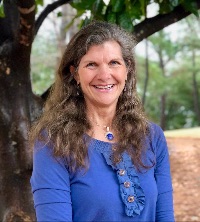
By Amy Rosemond
SFS wants to be a leader of change in science. As president, and in the other identities I have (mother, white, woman, mentor, and friend), I recognize that among the most important things I can do is center others’ voices who have been minoritized, learn from them, and advocate for them. Continue reading
Remembering
G. Wayne 'Doc' Minshall
1938 - 2020
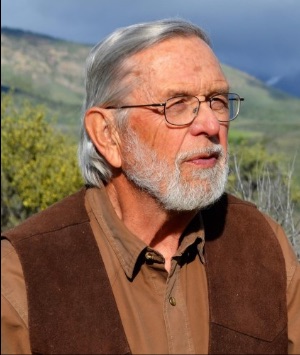
By Steve Thomas and Colden Baxter
On April 21st, our society lost one of its most prominent members, Dr. G. Wayne Minshall. A giant in stream ecology for the last 50 years, his passion for streams was matched only by his love of wilderness and the students and colleagues with whom he shared it. Though most known for his work on the River Continuum Concept (RCC), Dr. Minshall published groundbreaking papers in many of the sub-disciplines that have come to define stream ecology. He was also among the first stream ecologists to engage in land management and conservation work, bridging the perceived divide between “basic” and “applied” science, and navigating the connections between science and policy. Wayne, or “Doc” to his friends and colleagues, was born in Billings but raised in rural Montana near Lockwood. He received a B.S. in Fisheries Management from Montana State University (1961) and a PhD in Zoology from the University of Louisville (1965) where he met his wife Judy who shared his love of, and academic interest in, lakes and streams. He then completed a NATO postdoctoral fellowship at the Freshwater Biological Association’s Windermere Laboratory in England under the mentorship of Dr. T.T. Macan, the founding editor of Freshwater Biology.
He joined the Idaho State University faculty in 1966 where he spent his entire career, retiring in 2003 but remaining active in research and mentoring graduate students until his passing. Doc received the NABS (now SFS) Award of Excellence in 1994 and was inducted as a fellow of the American Association for the Advancement of Science (AAAS) in 2004. In 2017, he became a member of the inaugural class of SFS Fellows. Doc also helped to establish the Petersen award, the SFS Endowment Award for European scientists, in honor of his colleague R.C. “Bob” Petersen.
Over his career, he authored ~150 peer-reviewed articles, received more than 100 research grants, and produced 130 technical reports. More than 50 students completed their graduate degrees under his direction and many of them remain in the field of freshwater science.
The breadth of Wayne’s contributions to stream ecology is extraordinary (see list of publications here for corresponding numbers referenced below). Doc’s early work included seminal papers on the roles of allochthonous detritus (2) and autochthony (18) in energetics of stream organisms and ecosystems, factors controlling invertebrate community structure (5, 7, 13), invertebrate drift (4), and the feeding behavior, bioenergetics and thermal biology of aquatic insects (10, 16, 21). Much of his early research at ISU focused on cold desert streams under the auspices of the International Biological Program (IBP). Of course, Doc is best known as one of the driving forces behind the development of the RCC (27) and associated studies. With his close friend and colleague, Robin Vannote, Doc helped organize and lead the original RCC workshops, served as lead PI on the awards that funded the RCC research, and led some of its most impactful papers (39, 57, 78). A driven scientist devoted to understanding streams, Doc would go on to make significant contributions to diverse aspects of stream ecology right up until his recent passing. Noteworthy among these were his contributions to understanding the role of natural disturbances in controlling the structure and function of stream-riparian ecosystems (46, 61, 66) with a specific focus on the effects of wildfire (67, 103, 107, 119) and the medium- to longer-term dynamics that follow (120, 126, 131, 133, 139, 143, 145). His decades-long work with students and colleagues in the central Idaho wilderness and Yellowstone National Park revealed how natural wildfire cycles combine with climate regimes, geomorphic forces, and vegetation life histories to create the dynamism essential to maintaining the ecological character of streams and rivers. Throughout his career, he made significant contributions across levels of ecological organization from individuals and populations (especially of stream invertebrates;1, 6, 10, 11, 19, 24, 36, 58, 64, 118), to communities (5, 13, 17, 23, 26, 33, 45, 58, 61, 80, 106, 109), food webs (2, 9, 91, 133), and ecosystem processes like nutrient (110, 125, 147) and organic matter dynamics (22, 83, 112, 116, 121, 122). His work uncovered the natural characteristics and dynamics of wilderness streams, but also tackled many dimensions of human impacts, from water pollution and habitat degradation associated with land uses (9, 88, 130) to consequences of dams (134), invasive species (111, 141) and climate change (142, 143). His long-term study of Yellowstone fires (2014) produced one of the best long-term data sets on aquatic insects, often on a shoe-string budget, and was recently featured in a global meta-analysis of insect abundance (van Klink et al. 2020).
Doc was a pioneer among stream ecologists in his commitment to engaging in emerging problems associated with land management and pollution. He frequently advised conservation groups on applications of aquatic science to address human impacts, bridging the traditional divide between “basic” and “applied” science in various ways including development of bioassessment and long-term monitoring approaches (76, 89, 105, 114, 115, 140). He was active in local and state environmental issues, testified before congressional committees, served on a number of governmental panels addressing environmental issues, and was on the Board of Directors of the Pacific Rivers Council for many years. In 1969, he scripted the documentary film, “The Changing River” (see here), that raised concerns about pollution in the years leading up to the Clean Water Act. Wayne’s commitment to connecting science, policy, conservation, and education is reflected in the advice for young scientists he wrote with his induction as an SFS Fellow (found here) and is demonstrated in the career trajectories of his students, many of whom went on to roles in government management agencies and conservation organizations.
Central themes woven through the entirety of Doc’s life were his love of wilderness and “the old ways.” Nearly every summer since the late 1970’s, Doc spent significant time deep within Idaho’s Frank Church Wilderness with his family, his students, and colleagues. His time in the wilderness fueled much of the science described above, but also fulfilled his deep curiosity and interest in the ways and customs of the people who settled these areas. He was a practitioner and teacher of these ways—he and Judy taught an ISU class in “practical homesteading,” focused on skills needed for living off the land, and they often used their farm for the class. The farm hosted a menagerie of rabbits, sheep, pigs, ducks, goats, chickens (the family supplied eggs to a network of grateful customers for decades), and, Doc’s other passions, Airedale terriers and horses. Over the years, many of his graduate students were exposed to farm life and especially to horses, as horse-packing into the wilderness to maintain long-term studies became an annual event. In “retirement,” Doc continued to return to the central Idaho wilderness, often accompanying ISU class field trips and annual monitoring expeditions that continue to the present. His interest in late 1800’s Idaho wilderness exploration and homesteading resulted in three books published on the subject (2012, 2014, and 2018) that used original diaries and firsthand accounts to explore the forces that link people, landscapes, and rivers through history.
Doc’s impact on our science is rivaled only by the influence he had on his colleagues and students. His early collaborations formed life-long professional and personal relationships. Wayne’s closest colleagues, Robin Vannote and Colbert (Bert) Cushing (who also passed away recently, see remembrance here), were effectively members of his lab group and it was common for his students to spend substantial time in the field with either. In retirement, Doc maintained an office in the Stream Ecology Center, attended weekly lab meetings, and served on numerous student committees—particularly those whose research built on the long-term studies he began. He developed a rich collaboration and friendship with his successor, Colden Baxter, which helped create a “multi-generational” science experience for students.
It has become cliché, but to join the Minshall stream team was to join a family. This family came complete with traditions like memorable holiday parties (at which all were expected to deliver poetry) and annual road trips to NABS/SFS! Doc had an innate ability to draw out the best in his students and colleagues. His welcoming demeanor, ability to laugh heartily and often, and to provide his students complete and undivided attention conveyed how much he cared for those he worked and lived with. Inclusion in this family did not end with graduation. Rather, it continued to grow from those humble beginnings (usually in the middle of the wilderness with a very large horse) and continues to grow through the many lifelong friendships and collaborations that started in Doc’s lab. Beyond his mentorship and example, Doc became and remained a father (even grandfather!) figure to many students and his loss resonates with all who knew him.
Wayne is survived by his wife Judy and his children Jennye, Michele, and Jacob. In his name, in 2004 ISU established the annual G.W. Minshall Lecture Series in Ecology, annually hosting a leader in freshwater ecology. ISU is working to establish the G.W. Minshall Archive in its library, and has created the G. Wayne Minshall Stream Ecology Fund to support student research and long-term studies, and to which contributions can be made in his name (here; or contact Rich Ballou at ballrich@isu.edu or (208) 709-1174).
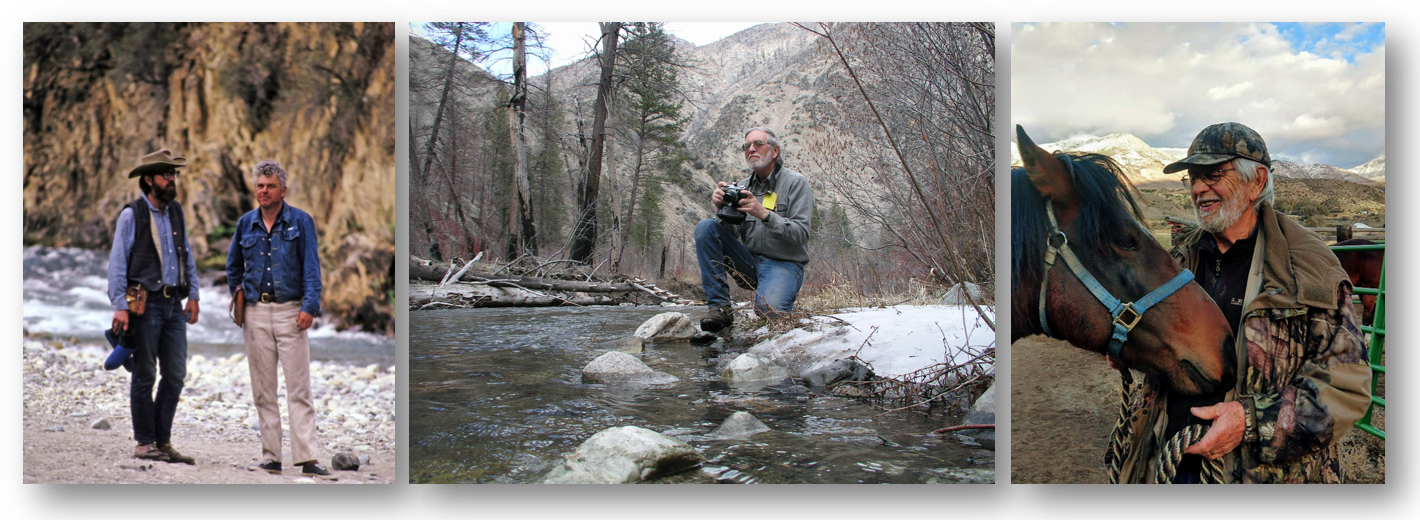
Doc with Robin Vannote at Loon Creek on Middle Fork of the Salmon River (1978) during the river continuum studies (photograph: Jim Brock), taking photos at long-term study site in the Big Creek drainage, central Idaho wilderness (early 2000’s) photograph: Holly Akenson), and at home on the farm with one of his beloved horses (photograph: Dale McCullough).



